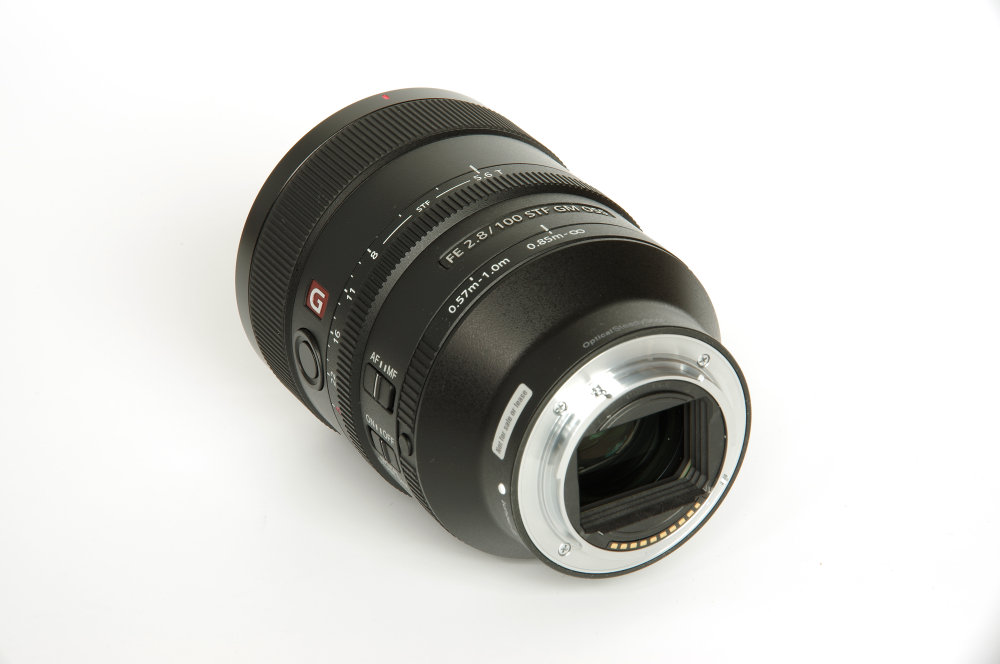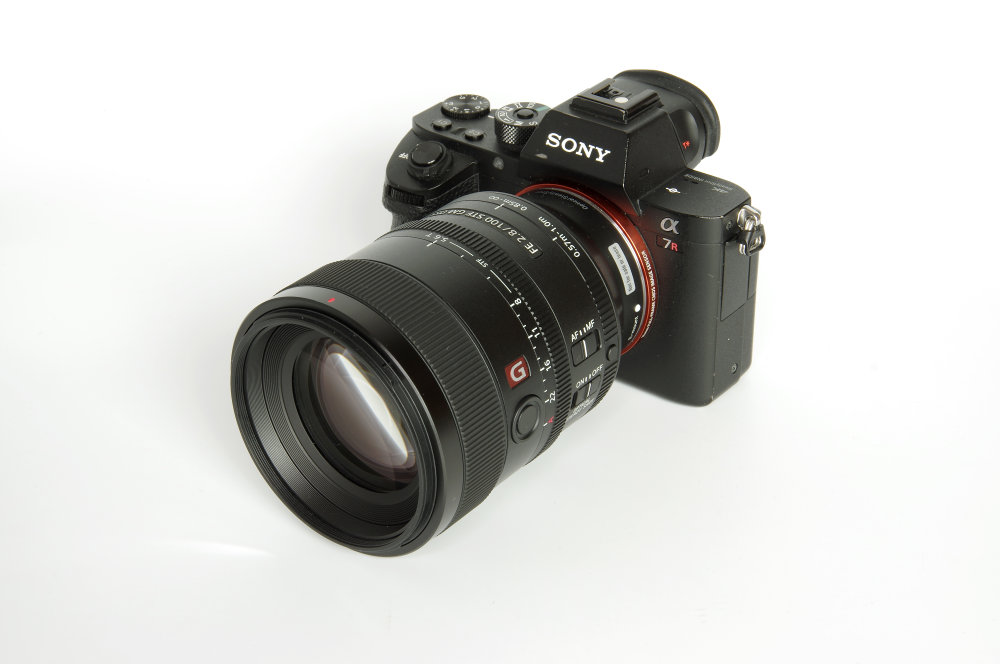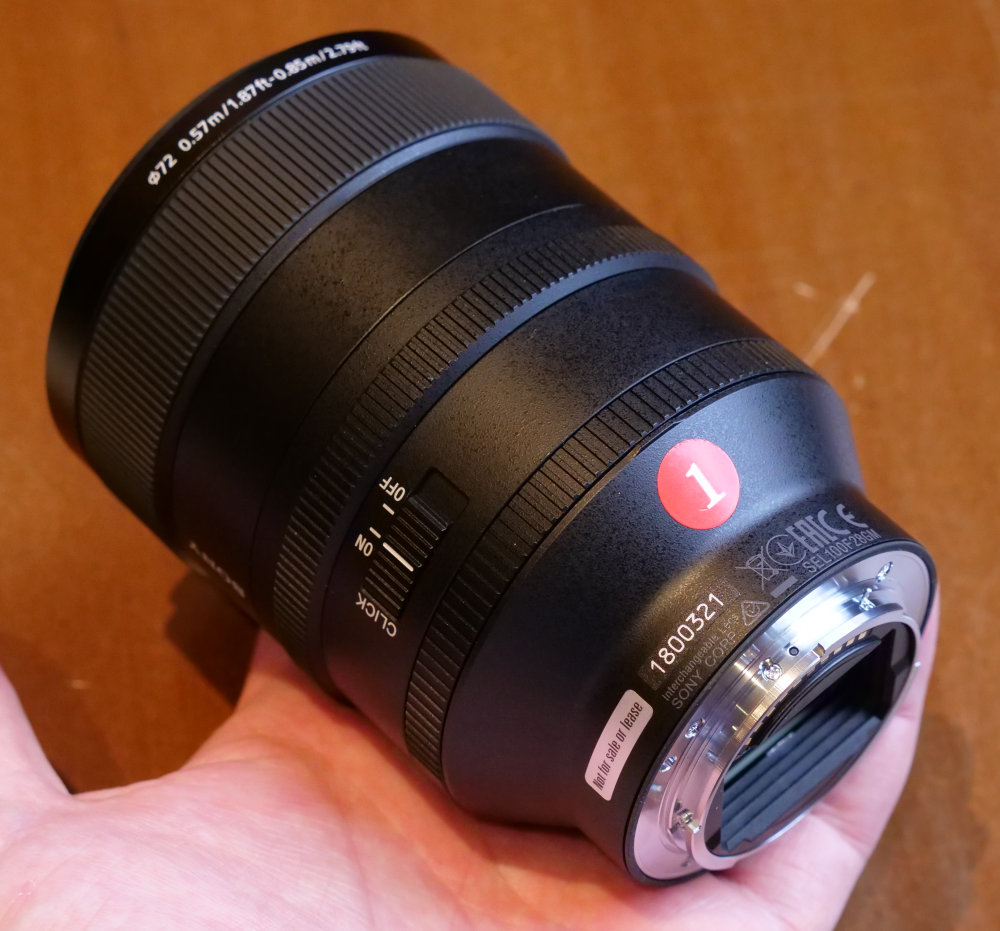Sony FE 100mm f/2.8 STF GM OSS Review
Sony FE 100mm f/2.8 STF GM OSS Handling and Features

A solid, squat lens weighing in at 700g, it looks and feels well balanced on the Sony A7R II body. Manufacturing quality is clearly very high, all controls offering smooth and efficient operation.
Starting at the front of the lens, we have a 72mm filter thread, surrounded by the bayonet fitting for the large round lens hood. Behind this is the electronic manual focusing ring. This is nicely damped and can also be used when the lens is set to AF, to give a final tweak to the focus position. Further back we find the single button that will cancel AF and therefore hold a focus position until it is released and a slight pressure on the shutter release activates AF again.

Next is the aperture ring. Set to A, control is passed to the camera. Otherwise, the required value can be dialled in on the lens. The placement of this ring is actually ideal to make working in this way very effective. Here we also see the effect the Apodization filter has on the lens aperture. Although this is an f/2.8 lens, this is the actual physical size of the aperture. An apodization filter is a graduated one that gradually darkens towards its edges. The optical effect is to create a smoother transition from areas in focus to those out of focus, without harsh edges or distortion of shapes. The effect on the aperture is to reduce the amount of light entering the lens, so the f number is no longer used to calculate exposure, the T number showing the actual Transmission value. This is more usually seen in cine/video use, but is valid for STF lenses as well. Therefore, the lens starts at T/5.6 and moves in values of T/6.3 and T/7.1 before reaching T/8. After that, the lens has no further STF effect, and the remaining T values are the same as the f values.
In practice, the camera indicates f numbers, but it does so accurately and the exposure is spot on. The important thing to remember is that the effects on bokeh are only seen between T/5.6 and T/8. This well suits shooting isolated subjects against out of focus backgrounds, be it portraits of flowers or any other subject.
Closer again to the camera body we have a series of switches around the barrel. On the left, the AF/MF switch and the OSS (Optical Steady Shot) on/off. OSS easily gives 4 stops advantage when using slower shutter speeds than a 100mm lens would usually suggest. On the right of the lens is the click stop switch for the aperture ring. Turning off the click stops can be useful for shooting video. Having the click stops can be useful for tactile purposes, where the aperture can be set by counting the clicks.
The ring closest to the camera selects the focusing ranges available. It is released by a small push button on the ring itself. The 0.57m – 1.0m setting gives a maximum magnification of 0.25x. The 0.85m – infinity setting gives a maximum magnification of 0.14x. This is a useful degree of magnification and allows for good close head shots. Many photographers find that 100mm is an ideal focal length for portraits, but also for other short telephoto applications.
The lens is dust and moisture resistant, nano coated and has 11 circular aperture blades. Optical configuration is 13 elements in 10 groups, plus the apodization element. There are one Aspherical and one ED (Extra Low Dispersion) elements in the formula.
This proves to be an absolutely magnificent lens to use. It is smooth as silk in operation in every respect. Uses include portraits, flower studies, landscapes, architecture and a whole host of other subjects. 100mm proves to be a very useful focal length. The STF function is an added bonus and there are very few lenses that offer this. To have this in an AF lens is even better, and focus locks on precisely, every time.

Add your message
Please login here or if you've not registered, you can register here. Registering is safe, quick and free.
photodo Stats
428 MTF tests
74 in-depth photodo reviews
100+ users join each day
Help the lens community by reviewing or rating a lens today via our lens search
Latest Lens Reviews
- Chinon 28mm f/2.8 Vintage Lens Review
- Canon EF 70-200mm f/4L IS II USM Lens Review
- Samyang AF 85mm f/1.4 EF Review
- Sigma 70mm f/2.8 DG Macro Art Review
- Samyang AF 24mm f/2.8 FE Review
- Meike 50mm f/1.7 Review
- Tamron 70-210mm f/4 Di VC USD Review
- Lensbaby Burnside 35mm f/2.8 Review
- Asahi Super Takumar 50mm f/1.4 Review
- Asahi Super-Multi-Coated Takumar 135mm f/3.5 Review
